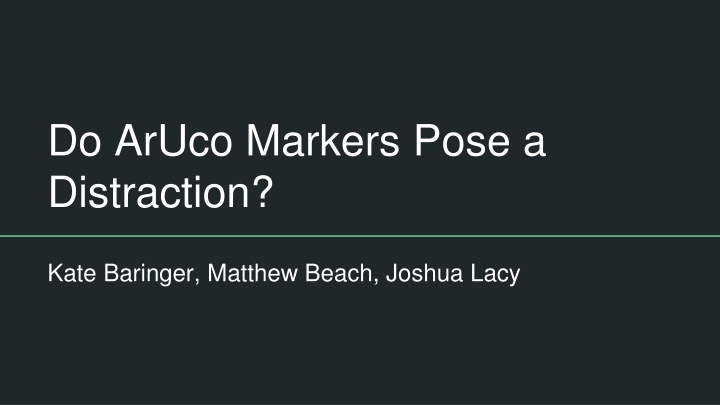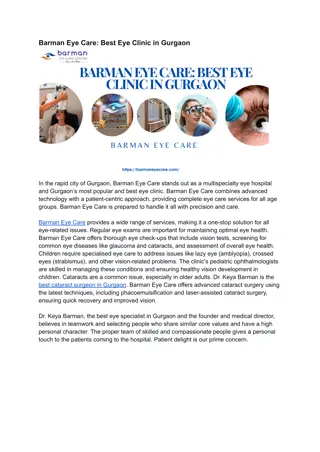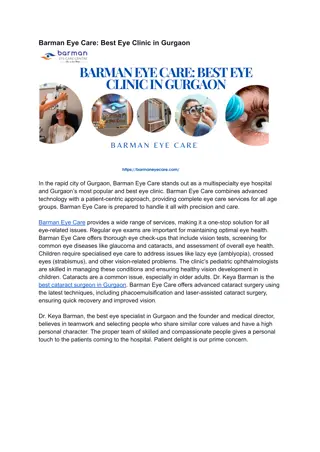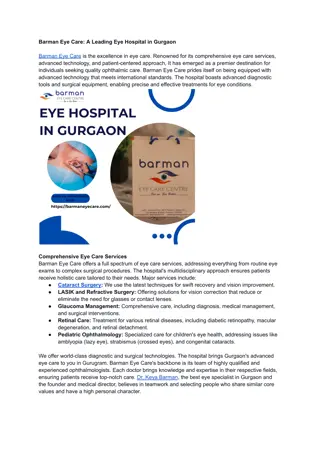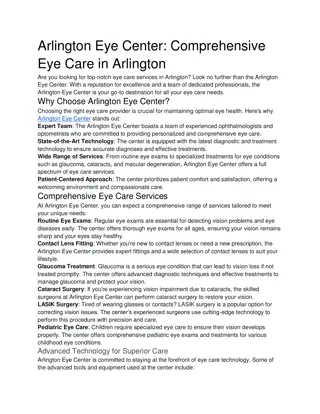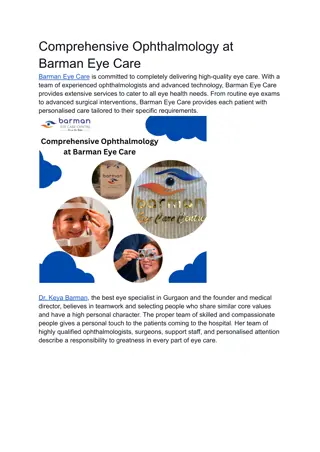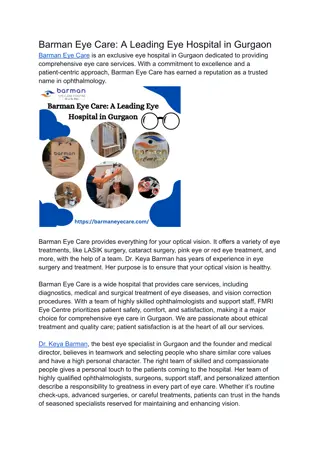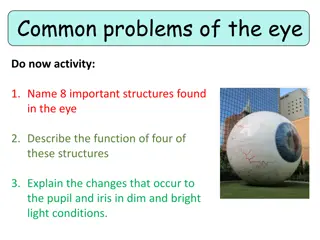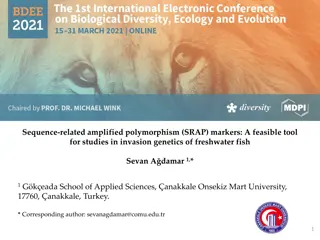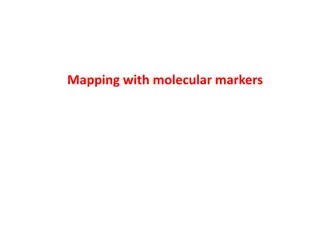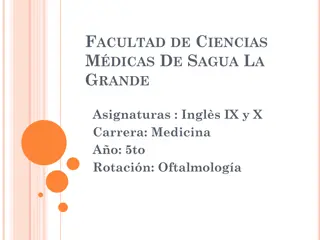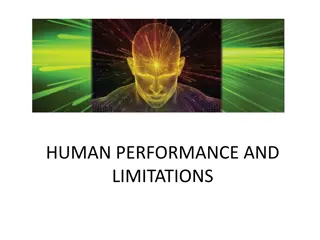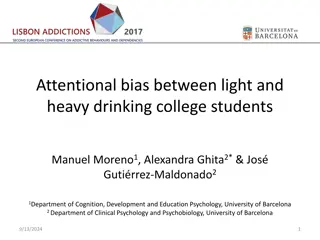Investigating ArUco Markers in Eye Tracking Studies
ArUco markers are analyzed for their impact on participants in 3D eye tracking experiments. The study hypothesizes the markers will eventually be ignored. The method, design, stimulus, analysis, and results are detailed.
Download Presentation

Please find below an Image/Link to download the presentation.
The content on the website is provided AS IS for your information and personal use only. It may not be sold, licensed, or shared on other websites without obtaining consent from the author.If you encounter any issues during the download, it is possible that the publisher has removed the file from their server.
You are allowed to download the files provided on this website for personal or commercial use, subject to the condition that they are used lawfully. All files are the property of their respective owners.
The content on the website is provided AS IS for your information and personal use only. It may not be sold, licensed, or shared on other websites without obtaining consent from the author.
E N D
Presentation Transcript
Do ArUco Markers Pose a Distraction? Kate Baringer, Matthew Beach, Joshua Lacy
Background In 3D eye tracking, ArUco markers are often used to streamline the process of estimating marker poses. QR-code like markers act as anchoring points for the eye tracking camera, allowing eye tracking software to calculate where in 3D space the gaze is. These markers may have an adverse effect on participants as they may unintentionally attract their gaze.
Hypothesis We hypothesize that, while the ArUco markers may draw the gaze during the first few sets of stimuli, it will eventually fade into the background and be ignored by participants. This is based on the trend for objects in the environment not to be perceived when they are unfamiliar or meaningless to the observer and irrelevant to the task being accomplished.
Methods/Experiment Design The used apparatus is a Gazepoint GP3 eye tracker. The experiment utilized a factorial between-subjects design with one independent variable and three conditions. The independent variable was the ArUco marker presence with levels none , small , and large The participants were shown 10 randomly ordered images that had a painting, a description, and if not part of the control, an ArUco marker of small or large size. All participants were given an identical task: describe the painting after viewing, try to remember when and who painted it.
Stimulus Participants were randomly assigned to one of the three groups: No marker Small Marker Large Marker All stimulus had the image on the left and the painting description displayed in the bottom right
Analysis Multivariate analysis Subjective Measure: Noticing IVs IV: Condition (Small, Large) DV: Self-reported noticing of ArUco marker AOI Name (Image, Description, Marker) Condition (Small, Large, None) DVs Percentage or time each AOI viewed Number of seconds each AOI viewed Number of fixations on each AOI
Results - Overall Effect of AOI Name significant 18 participants* 6 per condition 9 male, 8 female, 1 non-binary F(2) = 1429.28 p < 0.001 Effect of ArUco marker size was not Significant interaction between marker size and AOI name Noticing Responses by Condition F(8) = 11.29 p < 0.001 Marker Size Never Rarely Sometimes Often Small 3 1 2 Large 1 3 1 1 * 20 collected, 2 excluded from analysis due to poor data quality
Results - Percent Dwell Time Image looked at the most, followed by Description, then Marker Results for time spent looking at each AOI follow the same pattern
Results - Number of Fixations per AOI Image was fixated on most frequently, followed by Description, then Marker
Results - Interaction Picture Marker Picture Description Marker Description
Discussion The given task had a large influence on the results. Participants spent above 55%> of the time looking at the image part of the stimulus. The description was typically viewed once, sequentially (reading) ~2 fixations Often times the marker was not viewed. ~50 fixations ~12 fixations
Discussion Cont. The null hypothesis that ArUco markers do not affect gaze pattern (number of fixations, percent time viewed, total time viewed) cannot be disproven based on the data. Therefore, it is reasonable to conclude that the ArUco markers do not distract participants from the task at hand, at least for this viewing task. The size of the marker may make them more noticeable and memorable however, as more participants responded to the post-questionnaire that they remembered seeing the markers in the Large condition, even though the number of fixations was not significantly different.
Future Work Re-create the study with a larger sample size Prediction: overall effects will be similar, but interaction will disappear Follow-up study to determine whether ArUco markers act as a cueing stimuli
